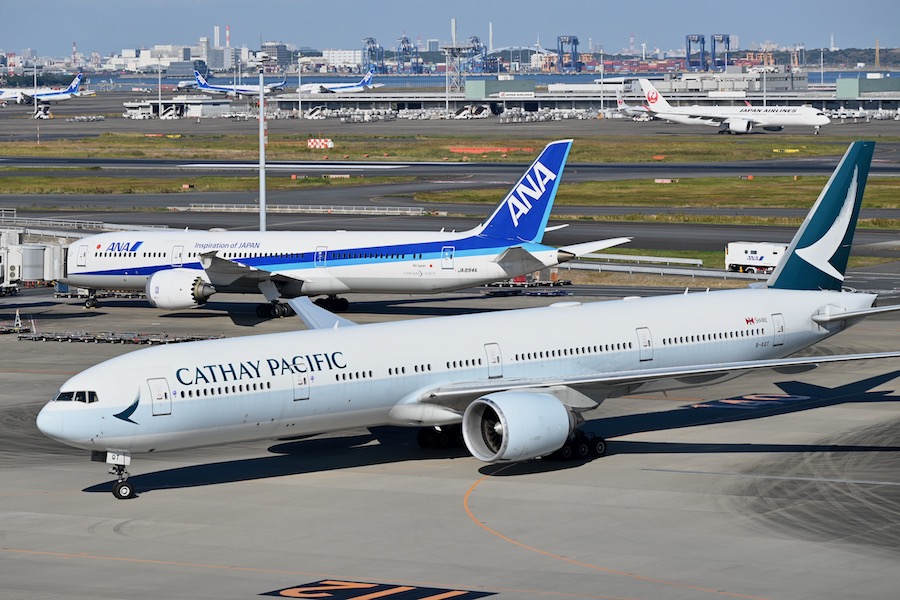
Cathay Pacific Airways’ Japan Reservations Drop 30% in July Amid Rumors of ‘Major Disaster’
Japan Airlines (JAL) held a press briefing on the night of January 3rd to discuss the collision and subsequent fire incident involving JAL flight 516 from Sapporo/Chitose to Tokyo/Haneda, and a Japan Coast Guard aircraft, which took place on January 2nd.
Managing Executive Officers Masayuki Tsutsumi and Norimasa Aoki provided explanations regarding the circumstances of the escape, the state of the aircraft at the moment of landing, and the roles of the flight crew members. The full text is as follows.
On January 2nd, JAL flight 516 had an incident as it approached and landed on Haneda’s Runway C, known as 34R, involving a collision with an aircraft from the Japan Coast Guard. We have confirmed the communications exchange during the landing.
Firstly, according to information from the flight crew, after landing on the runway, they experienced a sudden impact. Then, the aircraft began sliding towards the right side of the runway until it came to a stop. After completely stopping, there was initially no recognition of a fire outbreak in the cockpit. The flight crew became aware of the fire following a report from the cabin crew and judged it necessary to evacuate.
Upon evacuation, it’s required for the operating crew to use a checklist to shut down the engines, after which they proceeded with the checklist. Once the checklist was completed, they took the necessary items for emergency egress, which are stipulated to be carried out of the aircraft. With these items in hand, the captain moved to the rear cabin. This is also an established part of the operating crew’s role.
In the cabin, by the time the captain went outside, evacuation had already begun, and within the captain’s visual range, passengers were preparing to move towards the L1 and R1 doors at the front. The captain intended to head to the rear but encountered some passengers moving the opposite way. He waited for the right moment to proceed to the rear of the cabin.
It’s the operating crew and the captain’s job to ensure no passengers are left behind, so they checked each row and found some passengers still on board. They encouraged these passengers to move towards the front doors for evacuation. Finally, after ensuring no passengers remained inside, both the captain and the cabin crew evacuated through the rear door on the left side, L4.
Regarding the actions of the cabin crew, once the aircraft had come to a complete stop, they controlled the passengers’ panic as trained, urging them to stay calm. Then, the cabin crew by the L2 door reported seeing fire coming from the left engine. The chief cabin crew member moved to the rear to confirm this and reported directly to the captain about the fire and the need for evacuation, asking for instructions.
At the time, the cockpit door was unsecured for some reason. Receiving orders from the captain, they obtained permission to evacuate.
In the rear cabin, due to a failure in the in-flight intercom system, they awaited instructions from the front, which did not come. As smoke began to fill the cabin upon landing, becoming quite dense, the crew through the windows sighted orange flames and recognized the need for evacuation.
The cabin crew by the rear L-side door observed no fire and decided to deploy the evacuation slide, considering there was enough space. Before opening the door, they attempted to receive instructions from the cockpit, but as the intercom and PA system were both non-functional for some reason, they ultimately made the decision to commence evacuation and guided passengers out. The captain confirmed the successful evacuation of all passengers.